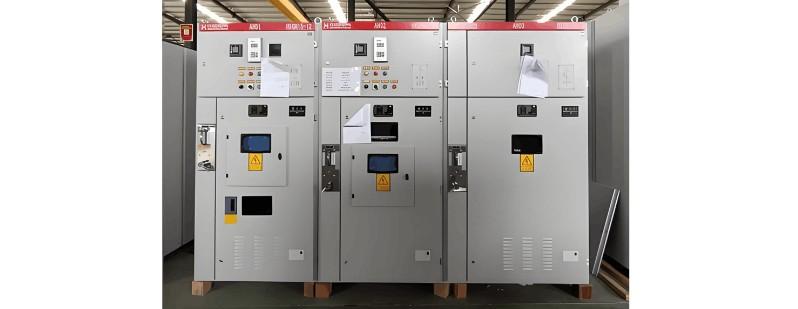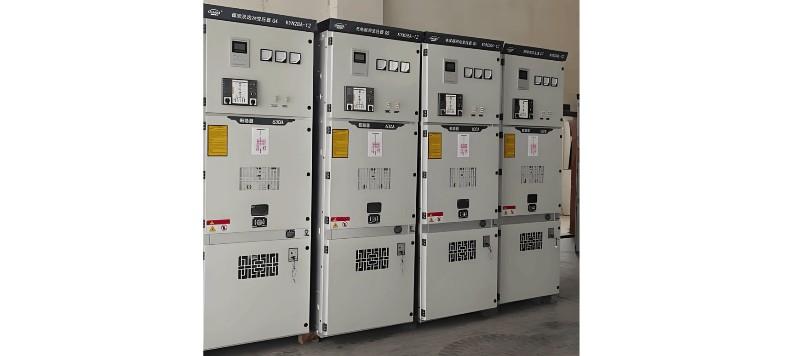1. Ring Main Unit (RMU) and Transformer Substation
The ring main unit (RMU) and transformer substation is a critical terminal in a distribution ring network system. The operational status of this terminal is directly affected by the performance of the distribution ring network system. Therefore, this section discusses the advantages, system composition, and key characteristics of the distribution ring network.
1.1 Advantages of RMU and Transformer Substation
Due to technological limitations, radial and radial-type distribution lines have been widely used in China's power system. However, with the advancement of modern science and technology and evolving social demands, traditional radial and radial-type distribution lines can no longer meet current requirements. In this context, the distribution ring network system has emerged. The introduction and application of the distribution ring network system have significantly reduced the number of distribution line corridors and enabled the integration of intelligent technologies, making distribution lines more intelligent.
Additionally, the distribution ring network system offers unparalleled advantages over traditional systems, including better adaptability, smaller footprint, lower investment costs, and excellent dynamic and thermal stability. It employs load switches paired with current-limiting fuses to feed transformers, providing effective protection for transformers. Thus, the application prospects of the distribution ring network system are very broad.
1.2 Composition of RMU and Transformer Substation
Compared to traditional distribution networks, the structure of the distribution ring network system is more complex. The system operates in two modes: open-loop and closed-loop. In urban power grids, closed-loop systems are widely used due to their higher reliability and stability. However, closed-loop systems also have drawbacks, such as difficulty in accurately calculating relay protection settings. In contrast, open-loop systems, with their relatively smaller capacity, are mostly applied in small and medium-sized towns, where relay protection parameters are easier to calculate. Furthermore, the wiring configurations used in China's distribution network construction vary, increasing the difficulty of fault handling and maintenance.
1.3 Key Characteristics
The distribution ring network system possesses unique characteristics not found in other systems. Currently, all distribution ring network systems used in China's power system are domestically designed and manufactured, making maintenance and repair relatively easier. Meanwhile, load switch breakers and load switch cabinets are essential components of the system. Power system personnel are allowed to install them within enclosures, enhancing the system's intelligence, reducing the management burden on operation and maintenance staff, and providing a crucial foundation for the application of automated terminals.

2. Fault Types and Handling Methods for RMU and Transformer Substation
During actual operation, the RMU and transformer substation are prone to faults such as surge arrester failures and operating mechanism malfunctions.
2.1 Surge Arrester Faults
Surge arresters ensure the normal operation of electrical equipment. If a surge arrester fails, serious consequences can occur. In an RMU and transformer substation, if a surge arrester is punctured or explodes, it can cause a short circuit in the RMU's cables or lead to discharge at the cable head, severely impacting the operation of the RMU and transformer substation.
2.2 PT and CT Faults
To provide the data required for automation and switch operation power in distribution cabinets, PTs (Potential Transformers) and CTs (Current Transformers) are typically installed in RMUs to ensure they function as intended. If PTs or CTs fail, it may be due to quality defects from the manufacturer. Therefore, during the procurement of electrical components, designated personnel must conduct thorough inspections to prevent substandard products from entering the RMU, avoiding unnecessary faults and ensuring the normal operation of the RMU and transformer substation.
2.3 Operating Mechanism Malfunction
RMUs and transformer substations are installed in various areas of the power system. If installed in a high-humidity environment and left unoperated for long periods, contact points in components like spring switches or control circuits may rust or age, affecting the sensitivity of the operating mechanism. If such a fault occurs, especially in harsh operating environments, maintenance personnel must strengthen inspection and patrol efforts to ensure the operating mechanism functions effectively and reliably.
2.4 Load Switch Faults
The load switch is a critical electrical component in an RMU. A fault in the load switch significantly impacts the RMU's operation. Current RMUs use combined switches to protect small-capacity distribution transformers. If a fault occurs in the load switch during a fuse operation, the plunger tripping mechanism may fail to operate normally, exacerbating the fault's impact.
2.5 Secondary Circuit Faults
Secondary circuit faults in an RMU may arise from poor contact or other wiring issues. To prevent such faults, attention must be paid to wire connections to ensure connection quality, and inspection and patrol efforts must be strengthened to reduce the likelihood of secondary circuit failures.
3. Fault Handling Measures for RMU and Transformer Substation
3.1 Management Measures
To effectively improve the operational quality of RMUs and transformer substations, it is necessary to reduce the likelihood of problems through various methods. During normal operations, professional maintenance personnel should conduct regular equipment maintenance. Staff must address the diverse issues encountered during operation using different methods and analyze problems to ensure timely resolution of similar issues in the future.
From a management perspective, enterprises must establish strict operational management strategies, clearly define employee responsibilities, fulfill each employee's management duties, and conduct regular equipment inspections and maintenance. If problems arise, effective measures must be taken promptly to maintain equipment, prevent corrosion, damage, and aging, and meticulously record fault detection and maintenance for future reference, thereby effectively improving fault resolution efficiency.

3.2 Technical Measures
With the advancement of current technological levels, advanced scientific achievements are increasingly applied in the power industry. Currently, the overall maintenance of RMUs and transformer substations requires enhanced application of technology and further improvement of emergency repair plans to increase overall operational stability. Relevant staff must develop effective solutions to improve the operational level of RMUs and transformer substations. Utilize computers to establish data models for calculating the installation height of RMUs, then adjust the layout height of the main cable cabinet based on the actual installation environment, and appropriately optimize the arrangement of the ring cabinet.
3.3 Enhancing Staff Competence
The technical skills of relevant personnel directly impact the operation, maintenance, and fault diagnosis of RMUs and transformer substations. First, enterprises must place greater emphasis on technical personnel. Social media should increase positive coverage of staff to improve their social status. Companies must design training programs for maintenance personnel to help them enhance their skills and implement incentive and disciplinary measures to boost work efficiency. Maintenance personnel need to improve their capabilities through various methods. Conduct comprehensive and targeted training for employees, covering technical standards, management standards, and work standards, retrain employees according to professional and required training plans to enhance their enthusiasm for participation. Incorporate training into the performance management system, evaluate each training course and participant, and use the results as a basis for company rewards and penalties.
3.4 Developing Emergency Plans
Companies must prepare emergency plans in advance to ensure the smooth operation of RMUs and transformer substations. First, relevant personnel must promptly establish emergency measures. If equipment fails, maintenance personnel must rush to the site for inspection. If the fault cannot be repaired immediately, the emergency plan should be activated promptly. The relevant department should immediately notify other personnel to start backup equipment to prevent the fault from escalating. To avoid recurrence, employees should promptly analyze the problem and develop effective solutions.
4. ConclusionIn
summary, although RMUs and transformer substations have many advantages in actual operation, the existing problems cannot be ignored. We should adopt scientifically sound solutions to promptly address issues arising during operation to ensure the normal functioning of the distribution network.























